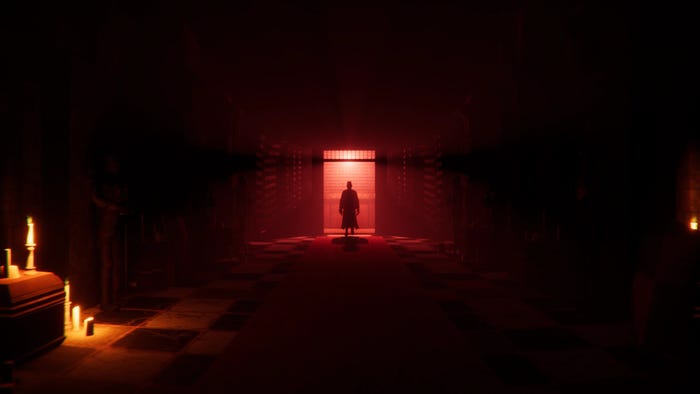
Featured Blog | This community-written post highlights the best of what the game industry has to offer. Read more like it on the Game Developer Blogs.
Here are tips that help you improve your animation demo reel and increase your chances of landing a job in the industry and find the right career path.

Serhii Krystiev is lead animator at Creative Assembly studio based in Horsham, UK, having joined Creative Assembly in 2021, worked on Warhammer III and Warhammer III DLC as a senior gameplay animator. Previously worked at 4A Games studio in Kyiv, Ukraine, on projects such as Metro Exodus, Metro Exodus: Sam's Story, and Metro Exodus: Two Colonels. In 4A, he started out as a cinematic and quick time event animator and grew to a creature principal animator on unannounced project. Before his gamedev experience, Serhii worked as a keyframe animator on feature film “The Little Dragon” and as a MOCAP animator on local TV Show.
In addition to professional experience Serhii worked on his own projects to improve animation and gain confidence as an animator. Being challenged with new and inspiring tasks, getting out of comfort zone, asking for feedback and analyzing animations, he believes, helps to stand out as a professional and keeps you motivated.
Here are tips that help you improve your animation demo reel and increase your chances of landing a job in the industry and find the right career path.
1. Keep your animation reel short, polished and presentable.
Focus on having best works with short animations that look clean, polished and sharp. Do not try to impress with the length and the amount of animations. Put your best shots at the beginning and delete weak and old ones. Ask your colleague or friend or mentor what works you should delete. If you will have weak and strong works in your reel it shows that you can’t differentiate good quality work from bad one.
The other beneficial part of keeping your personal animations short is that you will be less stressful during the process of creating them and while you will craft your portfolio you will avoid failure, frustration, you won’t feel tired and you will be more motivated to complete and finish your work.
(Serhii Krystiev Animation reel with personal works)
2. Keep your reel targeted.
Focus on having solid body mechanics shots, attacks and combos, death animations, idles that work from all angles if you are aiming for a role related to gameplay animation.
Aiming to work for the cinematic department – focus on having acting shot with a camera, understanding composition and facial animation.
Keep in mind that the studio will be focused on choosing reels that fit their style. For example if a studio works in a realistic style they won’t be interested in stylized animation with squash and stretch. Rather, it will focus on MOCAP performance or combining it with realistic keyframe animations.
Keep in mind what style you like and where you want to work – focus on that and create animation according to your personal preferences.
3. Share your works on social media. Ask for feedback.
Share your animations on social media and ask for feedback from professionals in the industry. This will help you improve your animation and make some very important connections. Applying feedback will make your work look better and stronger. You will start to become more visible for other studios, animators and HR. And your works become recognisable. At some point, you start to develop your own style and become more confident with your projects. Our community is very small, so being visible and active on social media will increase chances of finding work.
4. Focus only on animation during creating your demo reel.
Do not think too much about applying render and sound on your works. It is enough to apply simple lighting. The recruiter or hiring person will focus on your animation quality and skills and how well it fits the project. Other things like sound and rendering are less important. Also, there’s a huge chance that the reel will play without sound, so keep it simple and focus all your time on animation.
5. Breakdown your animation.
Describe your animation, what you were responsible for when creating it. Highlight if you implemented animation in an engine or collaborated with other people and departments. Maybe you worked with another animator or did some animation system, prototyping or even polished some animation - It is professional to clarify what you were responsible for. It also shows other areas of your interest and your potential strength.
6. Focus on animating characters from all angles.
This will improve your poses and balance and will make your body mechanics work better, and it keeps you out of trouble if for some reason the camera has been changed. For your animation, you can also add a simple camera movement, but do not forget to share the same animation from other angles. In gameplay this is a mandatory approach.
One day this rule completely changed my workflow. Before games I worked on feature films and animated scenes with cameras and I cheated a bit with the body mechanics, sometimes not even on purpose, because I was focused on the result I wanted to achieve on camera. I also had problems with the body mechanics and felt frustrated. The end result was great, but the way I approached it was a nightmare. Once I changed my habit from working on camera to working on 360 degrees, I became more confident in my workflow and my body mechanics issues disappeared.
(Personal project. Exported and rendered in UE. Rig: Kiel Figgins)
7. Use reference and learn to analyse animation
Spent time on filming or finding the right reference. Preparation will make your animation process smooth, and give you confidence. You are less likely to get stuck with animations and get frustrated. Also, focus on learning body mechanics and reference will help you to pick some details like knee jiggle, secondary motion, foot twists, that will add life and believability to your animation.
Another tip is to analyse animations from professional works. Use the frame-by-frame feature to break it down. You will begin to understand arcs, anticipation, spacing, weight, hanging time, poses.
In my experience, breaking down animation from games I like, improved my skill and I’ve started to understand all the principles behind it. I understood why professional works looks appealing, what rules and principles are behind it. For example, I drew over poses and started to understand how the shapes work and how to push them. I also analyse the timing of anticipation and hanging time (if character jumping). This gave me an Idea for my future works of how I can apply these rules in my personal project.
(Breakdown of animation done at Animawarriors workshop with Stephen Eusebio. Rigs: Kiel Figgins)
8. Keep yourself inspired and tuned.
Watch animation conferences, tutorials, articles, play games, watch game trailers and cinematic. Watch VFX based TV shows and feature films. You’ll build a visual library of references that will help you to find new ideas for your personal work, improve your workflow and keep you motivated and updated.
In addition, our industry is rapidly evolving and the animation process is changing. We have new tools and new software, we have to follow all the trends or at least know which direction we are all going.
9. Attend animation courses
Animation courses will help you improve your animation skills, confidence, and communication practice. It is also a great opportunity to make new friends and acquaintances.
In addition to teaching you how to apply your mentor’s feedback to your work, the courses will also provide you with many answers and new perspectives on your workflow and pipeline.
Courses will improve your skill and at the end you will have some animation works that you can share and use for your portfolio, but it is hard work and you have to understand that you have to put a lot of effort into making your animation looks great.
(Squashnstretch animation school, mentor Filippo Dattola. Rigs: Kiel Figgins, Truong CG artist)
10. Add massive and weighted characters.
When looking through candidate's reels, I look for a variety of differently weighted characters, weapons, creatures. Having big and powerful characters, I think, is an important and valuable thing to have in your portfolio. It shows how you can get the heaviness right and how you can work with different character sizes. Weighted and scaled symbols are a useful practice in general and are suitable for all studios and different styles.
(Personal project. Rigs Kiel Figgins)
Read more about:
Featured BlogsAbout the Author(s)
You May Also Like









